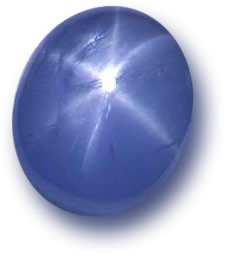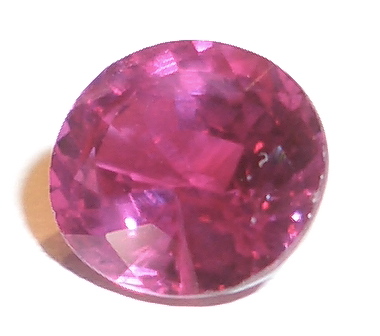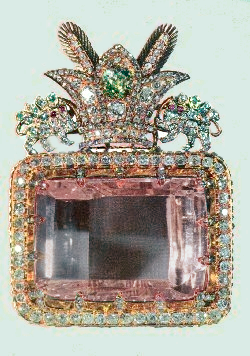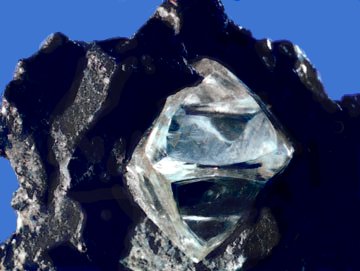
The De Beers Group. A largest and more reknown company deals in Diamonds. Diamonds were formed at least 990 million years ago, although some are estimated to be as many as 4.25 billion years old.
The house of information about Diamonds
 Clarity refers to the presence of inclusions in a diamond.
Clarity refers to the presence of inclusions in a diamond.Naturally-occurring features called inclusions provide a special fingerprint within the stone. Inclusions are natural identifying characteristics such as minerals or fractures, occurring while the diamond was being formed in the Earth.The majority of these natural birthmarks are invisible to the naked eye, yet they affect the way light is reflected and refracted within the stone. Inclusions appear as different shapes, such as crystals, clouds or feathers. These idiosyncrasies often add to the overall character of the diamond. Containing several birthmarks or inclusions, the Excelsior is considered one on the world's most beautiful diamonds.Most inclusions are not visible to the naked eye unless magnified.To view inclusions, gemologists need to use a magnifying loupe that allows them to see a diamond at 10x its actual size.Inclusions are ranked on a scale of perfection, known as clarity. The clarity scale, ranging from F (Flawless) to Included (I), is based on the visibility of inclusions at a magnification of 10x. Even with a loupe, the birthmarks in the VVS (Very, Very Slightly Included) to VS (Very Slightly Included) range can be very difficult to find. It is only when a diamond is graded 'I' that it is possible to see the birthmarks with the naked eye. The position of inclusions can affect the value of a diamond and you should consider the number, size, brightness, nature and position of inclusions. Some inclusions can be hidden by a mounting, and have little effect on the beauty or brilliance of a stone. An inclusion in the middle or top of a diamond could impact the dispersion of light, sometimes making the diamond less brilliant.
There are very few flawless diamonds found in nature, making these diamonds much more valuable. Color refers to the degree to which a diamond is colorless.
Color refers to the degree to which a diamond is colorless.Diamonds can be found in many colors, however white-colored or colorless diamonds remain the most popular.Diamonds are graded on a color scale which ranges from D (colorless) to Z. Warmer colored diamonds (K–Z) are particularly desirable when set in yellow gold. Icy winter white colored diamonds (D–J) look stunning set in white gold or platinum. Color differences are very subtle and it is very difficult to see the difference between an E and an F, for example. Therefore, colors are graded under controlled lighting conditions and are compared to a master set for accuracy. Truly colorless stones, graded D are treasured for their rarity. Color, however, is subjective. The Incomparable, one of the world's most beautiful diamonds, contains hints of brown, smokey amber and champagne colors. Nature has also created diamonds in shades of blue, green, yellow, orange, and pink. Red is the rarest of all. These diamonds are called ‘coloured fancies’ and are extremely rare and highly treasured.
 Carat refers to the weight of a diamond.
Carat refers to the weight of a diamond.Often mistaken with size, carat it is actually a measure of weight.The term carat is a derivative of the word carob. Carob seeds, which are surprisingly uniform in weight, were used as a reference for diamond weight in ancient civilisations. One carob seed equalled one carat.
One carat is equivalent to 200 milligrams. One carat can also be divided into 100 ‘points’. A .75 carat diamond is the same as a 75-point or 3/4 carat diamond.Since larger diamonds are found less frequently in nature, a single 1-carat diamond will cost more than two 1/2-carat diamonds, assuming the colour, clarity and cut are the same.Cut and mounting can make a diamond appear larger or smaller than its actual weight. A diamond’s setting should always optimise its beauty.
 Cut refers to the angles and proportions of a diamond. It is the only one of the 4Cs that is influenced by the human hand.
Cut refers to the angles and proportions of a diamond. It is the only one of the 4Cs that is influenced by the human hand. Gemmologists and jewellers assess the physical attributes of diamonds using the 4Cs classification system – cut, carat, colour and clarity.The 4Cs classification enables the comparison and valuation of diamonds. No one 'C' is more significant than another, and none will diminish in value over time. A diamond’s beauty is based on far more than these characteristics. Each one was formed billions of years ago and has travelled a long and arduous journey from deep within the Earth. And while most of a diamonds’ qualities are defined by nature, it takes a master craftsman to unlock the diamond’s true brilliance, fire and beauty.
Gemmologists and jewellers assess the physical attributes of diamonds using the 4Cs classification system – cut, carat, colour and clarity.The 4Cs classification enables the comparison and valuation of diamonds. No one 'C' is more significant than another, and none will diminish in value over time. A diamond’s beauty is based on far more than these characteristics. Each one was formed billions of years ago and has travelled a long and arduous journey from deep within the Earth. And while most of a diamonds’ qualities are defined by nature, it takes a master craftsman to unlock the diamond’s true brilliance, fire and beauty.
 There are six major tips to clean your Diamond Jewelery:
There are six major tips to clean your Diamond Jewelery:1)First of all, pour some detergent into the water, and mix it till the mixture is full of lather. Remember, the warm water works best.
2) Take your diamond jeweleries, and dip it into the mixture. Leave it dipped for a while, so the dust particles may loose their strength.
3) After five minutes, rinse the jeweleries smoothly for few moments holding with your two-three fingers. While rinsing, the diamonds should be inside the mixture.
4) Now pull your jeweleries out of the detergent solution, and clean them carefully using a soft brush. The use of any hard brush will definitely end up damaging the shine further. In case of the absence of a special diamond cleaning brush, a lipstick brush or a toothbrush may prove handy.
5) Brush all the parts of your diamonds carefully, especially the back of the diamonds. The back becomes the dirtiest as it remains in the constant contact with the sweating skin.
6) Then, use a clean piece of cotton and wrap it around the diamond jeweleries, so the fabric can absorb the water left on them. It is better to leave them under the fan for a while.
Apart from using detergent solutions, one can use any ammonia-based cleaner to clean the diamonds too. Only it needs to leave the jeweleries in the ammonia solution for 5-6 hours before cleaning up with a brush.
 A star sapphire is a type of sapphire that exhibits a star-like phenomenon known as asterism. Star sapphires contain intersecting needle-like inclusions (often the mineral rutile, a mineral composed primarily of titanium dioxide that cause the appearance of a six-rayed 'star'-shaped pattern when viewed with a single overhead light source.
A star sapphire is a type of sapphire that exhibits a star-like phenomenon known as asterism. Star sapphires contain intersecting needle-like inclusions (often the mineral rutile, a mineral composed primarily of titanium dioxide that cause the appearance of a six-rayed 'star'-shaped pattern when viewed with a single overhead light source. The value of a star sapphire depends not only on the carat weight of the stone but also the body color, visibility and intensity of the asterism.
The Star of India is thought to be the largest star sapphire in the world and is currently on display at the American Museum of Natural History in New York City. The 182 carat (36.4 g) Star of Bombay, housed in the National Museum of Natural History, Washington D.C., is a good example of a blue star sapphire.
 Padparadscha is a pinkish-orange to orangy-pink colored corundum, with a low to medium saturation and light tone, originally being mined in Sri Lanka, but also found in deposits in Vietnam and Africa. Padparadscha sapphires are very rare, and highly valued for their subtle blend of soft pink and orange hues. The name derives from the Sinhalese word for lotus blossom. Along with rubies they are the only corundums to be given their own name instead of being called a particular colored sapphire.
Padparadscha is a pinkish-orange to orangy-pink colored corundum, with a low to medium saturation and light tone, originally being mined in Sri Lanka, but also found in deposits in Vietnam and Africa. Padparadscha sapphires are very rare, and highly valued for their subtle blend of soft pink and orange hues. The name derives from the Sinhalese word for lotus blossom. Along with rubies they are the only corundums to be given their own name instead of being called a particular colored sapphire.The rarest of all padparadschas is the totally natural variety, with no beryllium or other treatment, and no heating. To find a stone that is certified by a reputable lab as being completely natural is extremely rare and the stone will be very expensive. High quality, unheated and untreated natural padparadscha sapphires will start off in the range of $5,000 per carat and rise by size, color, tone, cut, and clarity, to $20,000–30,000 per carat.
 Purple sapphires are lower in price than blue ones. These stones contain the trace element vanadium and come in a variety of shades. Yellow and green sapphires have traces of iron that gives them their color. Pink sapphires have a trace of the element chromium and the deeper the color pink the higher their monetary value as long as the color is going toward the red of rubies. Sapphires also occur in shades of orange and brown, and colorless sapphires are sometimes used as diamond substitutes in jewelry. Salmon-colored padparadscha (see below) sapphires often fetch higher prices than many of even the finest blue sapphires. Recently, sapphires of this color have appeared on the market as a result of a new treatment method called "lattice diffusion"'
Purple sapphires are lower in price than blue ones. These stones contain the trace element vanadium and come in a variety of shades. Yellow and green sapphires have traces of iron that gives them their color. Pink sapphires have a trace of the element chromium and the deeper the color pink the higher their monetary value as long as the color is going toward the red of rubies. Sapphires also occur in shades of orange and brown, and colorless sapphires are sometimes used as diamond substitutes in jewelry. Salmon-colored padparadscha (see below) sapphires often fetch higher prices than many of even the finest blue sapphires. Recently, sapphires of this color have appeared on the market as a result of a new treatment method called "lattice diffusion"'
 Color in gemstones breaks down into three components: hue, saturation, and tone. Hue is most commonly understood as the " color" of the gemstone. Saturation refers to the vividness or brightness or "colorfulness" of the hue, and tone is the lightness to darkness of the hue. Blue sapphire exists in various mixtures of its primary and secondary hues, various tonal levels (shades) and at various levels of saturation (brightness): the primary hue must, of course, be blue.
Color in gemstones breaks down into three components: hue, saturation, and tone. Hue is most commonly understood as the " color" of the gemstone. Saturation refers to the vividness or brightness or "colorfulness" of the hue, and tone is the lightness to darkness of the hue. Blue sapphire exists in various mixtures of its primary and secondary hues, various tonal levels (shades) and at various levels of saturation (brightness): the primary hue must, of course, be blue. Blue sapphires are evaluated based upon the purity of their primary hue. Purple, violet and green are the normal secondary hues found in blue sapphires. Violet and purple can contribute to the overall beauty of the color, while green is considered a distinct negative. Blue sapphires with no more than 15% violet or purple are generally said to be of fine quality. Blue sapphires with any amount of green as a secondary hue are not considered to be fine quality. Gray is the normal saturation modifier or mask found in blue sapphires. Gray reduces the saturation or brightness of the hue and therefore has a distinctly negative effect.
The color of fine blue sapphires can be described as a vivid medium dark violet to purplish blue where the primary blue hue is at least 85% and the secondary hue no more than 15% without the least a mixture of a green secondary hue or a gray mask.The 422.99 carats (84.60 g) Logan sapphire in the National Museum of Natural History, Washington D.C. is one of the largest faceted gem-quality blue sapphires in the world.
Because it is a gemstone, sapphire is commonly worn as jewelery. Sapphire can be found naturally, or manufactured in large crystal boules. Because of its remarkable hardness, sapphire is used in many applications, including infrared optical components, watch crystals, high-durability windows, and wafers for the deposition of semiconductors, such as GaN nanorods and blue LEDs.
Sapphire is one of the two gem varieties of corundum, the other being the red ruby. Although blue is the most well known hue, sapphire is any color of corundum except red; red corundum is known as ruby. Sapphire may also be colorless, and it also occurs in the non-spectral shades gray and black. Pinkish-orange sapphire is known as padparadscha.
The cost of natural sapphire varies depending on their color, clarity, size, cut, and overall quality as well as geographic origin. Significant sapphire deposits are found in Eastern Australia, Thailand, Sri Lanka, Madagascar, East Africa and in the United States at various locations (Gem Mountain) and in the Missouri River near Helena, Montana. Sapphire and rubies are often found together in the same area, but one gem is usually more abundant. A ruby is a pink to blood-red gemstone, a variety of the mineral corundum (aluminium oxide). The red color is caused mainly by the presence of the element chromium . Its name comes from ruber, Latin for red. Other varieties of gem-quality corundum are called sapphires. The ruby is considered one of the four precious stones, together with the sapphire, the emerald, and the diamond.
A ruby is a pink to blood-red gemstone, a variety of the mineral corundum (aluminium oxide). The red color is caused mainly by the presence of the element chromium . Its name comes from ruber, Latin for red. Other varieties of gem-quality corundum are called sapphires. The ruby is considered one of the four precious stones, together with the sapphire, the emerald, and the diamond.Prices of rubies are primarily determined by color. The brightest and most valuable "red" called pigeon blood-red, commands a huge premium over other rubies of similar quality. After color follows clarity: similar to diamonds, a clear stone will command a premium, but a ruby without any needle-like rutile inclusions will indicate that the stone has been treated. Cut and carat (size) also determine the price.
Of the world's rubies, the finest are found in Myanmar (Burma). Burmese gems are prized for their hue and high degree of saturation. Thailand buys the majority of Myanmar's gems. Myanmar's "Valley of Rubies", the mountainous Mogok area, 200 km (125 miles) north of Mandalay, is noted for its rare pigeon's blood rubies and blue sapphires. Working conditions in the Mogok Valley are primitive and as such similar to mining conditions in other parts of the world.

 A number of large or extraordinary diamonds have gained fame, both as exquisite examples of the beautiful nature of diamonds, and because of the famous people who wore, bought, and sold them. These diamonds are often depicted in marketing materials aimed at the retail diamond customer. Some of the very famous diamonds are listed below.
A number of large or extraordinary diamonds have gained fame, both as exquisite examples of the beautiful nature of diamonds, and because of the famous people who wore, bought, and sold them. These diamonds are often depicted in marketing materials aimed at the retail diamond customer. Some of the very famous diamonds are listed below. The formation of natural diamond requires very specific conditions. Diamond formation requires exposure of carbon-bearing materials to high pressure, ranging approximately between 45 and 60 kilobars but at a comparatively low temperature range between approximately 1652–2372 °F (900–1300 °C). These conditions are known to be met in two places on Earth; in the lithospheric mantle below relatively stable continental plates , and at the site of a meteorite strike.
The formation of natural diamond requires very specific conditions. Diamond formation requires exposure of carbon-bearing materials to high pressure, ranging approximately between 45 and 60 kilobars but at a comparatively low temperature range between approximately 1652–2372 °F (900–1300 °C). These conditions are known to be met in two places on Earth; in the lithospheric mantle below relatively stable continental plates , and at the site of a meteorite strike. Diamonds are thought to have been first recognized and mined in India, where significant alluvial deposits of the stone could then be found many centuries ago along the rivers Penner, Krishna and Godavari. Diamonds have been known in India for at least 3000 years but most likely 6000 years.
Diamonds are thought to have been first recognized and mined in India, where significant alluvial deposits of the stone could then be found many centuries ago along the rivers Penner, Krishna and Godavari. Diamonds have been known in India for at least 3000 years but most likely 6000 years.